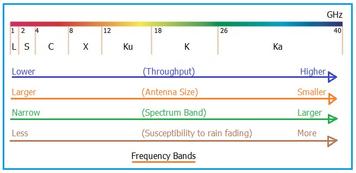mmWave vs. Microwave: Key Differences Explained
Advertisement
This article clarifies the distinctions between millimeter waves (mmWave) and microwaves, both of which are part of the electromagnetic (EM) spectrum. mmWave occupies the frequency band immediately following the microwave band.
Frequency and Wavelength Comparison
The tables below outline the frequency and wavelength characteristics of both mmWave and microwaves.
Millimeter Wave (mmWave)
The term “millimeter” in mmWave stems from the wavelength of this EM wave type, which falls within the millimeter range. mmWave is also referred to as the Extremely High Frequency (EHF) band.
| Wave Type | Operating Frequency (Hz) | Wavelength (meters) | Applications |
|---|---|---|---|
| Millimeter Wave (mmWave) | 30 GHz to 300 GHz | 10 mm to 1 mm | mmWave imaging, mmWave scanners, medicine, radar, 5G applications |
As illustrated in Figure 1, mmWave is susceptible to attenuation from factors such as fog, snow, or rain, depending on the specific frequency bands used. Consequently, mmWave is typically employed for short-distance communication. However, it exhibits less susceptibility compared to infrared and optical wavelengths.

Various band designations are used for mmWave frequencies, including Q band, U band, V band, E band, W band, F band, and D band. Each band corresponds to a specific frequency range. The performance, precision, and maneuverability of mmWave systems make them attractive for various applications, including defense systems employing mmWave radar for surveillance and weapons systems.
Microwave
Microwave is a general term for a frequency band within the electromagnetic spectrum. Table 2 presents the frequency range and corresponding wavelength for microwaves. Microwave frequencies are generated using oscillating currents in devices like Gunn diodes, IMPATT diodes, tunnel diodes, and vacuum tubes.
Microwave frequency bands encompass L band, S band, C band, X band, Ku band, K band, and Ka band.
| Wave Type | Operating Frequency (Hz) | Wavelength (meters) | Applications |
|---|---|---|---|
| Microwave | 300 MHz to 30 GHz | 1 to 0.01 meter | Television, radar, satellite communications, microwave ovens |
Key Differences Between mmWave and Microwave
Although both mmWave and microwave reside within the electromagnetic spectrum, mmWave offers several advantages:
- Broad Bandwidths: mmWave provides significantly wider bandwidths compared to microwaves, enabling higher data transmission rates.
- Higher Spatial Resolution: The shorter wavelengths of mmWave result in improved spatial resolution, which is crucial for imaging and radar applications.
- Low Probability of Interception and Interference: mmWave signals are more directional and less prone to interference, making them suitable for secure communication.
- Smaller Antenna and Equipment Size: Due to the shorter wavelengths, mmWave antennas and equipment can be smaller and more compact.
- Lighter Weight: The reduced size also contributes to lower weight, making mmWave systems more portable.
- Rugged and Reliable: mmWave systems are generally robust and reliable, capable of withstanding challenging environmental conditions.
- Low Voltage Power Supplies: mmWave circuits often require lower voltage power supplies, leading to greater energy efficiency.
Advertisement
 RF
RF

